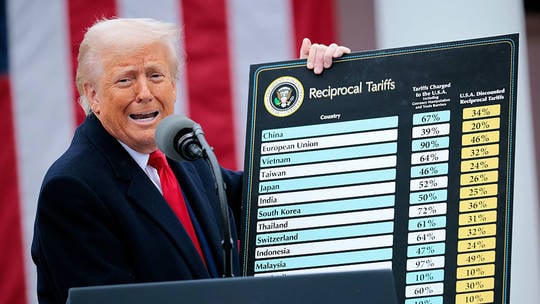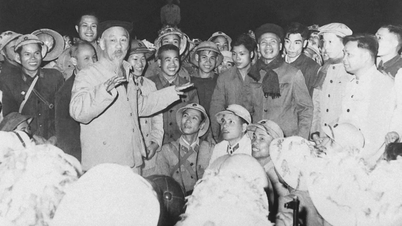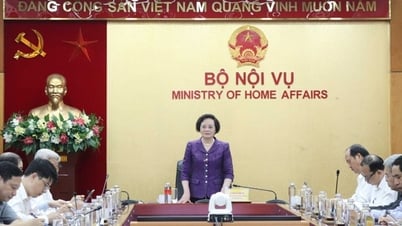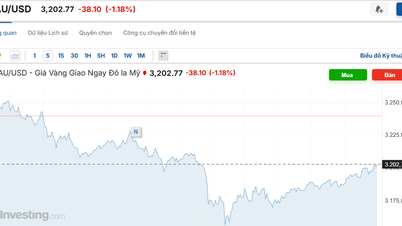Photo: Getty Images.
As expected, he wasted no time testing that theory. In February 2025, he imposed tariffs on imports from Canada and Mexico, claiming that the two countries were not doing enough to curb migration and drug trafficking. Ottawa and Mexico City quickly came to the negotiating table, validating Donald Trump’s belief that tariffs could beat other countries to the table. That success emboldened him to continue his global strategy.
And he did. What happened next was much more interesting than many expected.
Markets crashed. Oil prices plunged. Economists predicted a recession. Americans began hoarding food and supplies. The media scrambled to come up with nicknames for the chaos. Meanwhile, the White House calmly insisted that everything was “going according to plan.”
This is essentially a classic Donald Trump tactic. He creates a crisis, then offers to go back in as a “gesture of goodwill,” demanding concessions in return. In this case, those concessions include correcting the US trade deficit and bringing manufacturing back home.
But this time, Donald Trump may have overplayed his hand. Starting a trade war with the entire world at once has shaken not only governments but Americans at home. As the reality of a potential recession sets in, Donald Trump’s approval ratings have plummeted. Many have begun to view the president and his team as incompetent.
The widespread backlash has given Democrats a rare opportunity to strike back. Protests against the tariffs have erupted across the country, organized by liberal groups and activists. Donald Trump has faced public criticism from Barack Obama and Kamala Harris. Congressman Al Green has even announced plans to introduce articles of impeachment against him.
And it’s not just the left that’s sounding the alarm. Republican Senator Ted Cruz, chairman of the Senate Commerce Committee, has warned of a potential “bloodbath” in the 2026 midterm elections if tariffs trigger a full-blown recession. Wall Street billionaires—many of them Donald Trump supporters—have voiced their displeasure. Most notably, Elon Musk, a longtime Trump ally, has publicly criticized the president’s trade adviser Peter Navarro, calling him “a fool.”
Faced with political , financial and public pressure, President Donald Trump’s administration acted quickly. On April 9, he announced that 75 countries had contacted him to request a deal. In response, he reduced tariffs to 10% for 90 days, citing it as an opportunity to negotiate.
But not everyone is budging. China has proven to be a much more resilient adversary. The US-China trade war continues to escalate, with retaliatory tariffs now at 140% – and rising. If left unchecked, trade between the world’s two largest economies could fall by 80%, with dire consequences for both sides.
So what next? There are two possible scenarios. Either Donald Trump pressures his trading partners into making quick concessions and declares victory, or he walks away mid-sentence and finds a new distraction, as he did with Ukraine.
Remember Donald Trump’s promise to bring peace to Ukraine “within 24 hours?” As soon as that didn’t happen, the White House stopped talking about it.
That’s Donald Trump’s style. Create chaos, dominate the norm, then quietly go quiet when it doesn’t work anymore. But he still has a few cards left to play. Like Gaza, which he once called “the Riviera of the Middle East.” Or nuclear Iran, one of his favorite unrealized “great ideas.”
TD (according to RT)
Source: https://baothanhhoa.vn/tai-sao-ong-trump-nhanh-chong-dao-nguoc-cuoc-chien-thuong-mai-toan-cau-245407.htm



![[Photo] Many young people patiently lined up under the hot sun to receive a special supplement from Nhan Dan Newspaper.](https://vphoto.vietnam.vn/thumb/1200x675/vietnam/resource/IMAGE/2025/5/18/6f19d322f9364f0ebb6fbfe9377842d3)
![[Photo] Party and State leaders visit President Ho Chi Minh's Mausoleum](https://vphoto.vietnam.vn/thumb/1200x675/vietnam/resource/IMAGE/2025/5/19/d7e02f242af84752902b22a7208674ac)
![[Photo] Ready for the top competitions of Vietnamese table tennis](https://vphoto.vietnam.vn/thumb/1200x675/vietnam/resource/IMAGE/2025/5/18/9c547c497c5a4ade8f98c8e7d44f5a41)


![[Photo] Party and State leaders attend the special art program "You are Ho Chi Minh"](https://vphoto.vietnam.vn/thumb/1200x675/vietnam/resource/IMAGE/2025/5/18/6895913f94fd4c51aa4564ab14c3f250)
















































































Comment (0)